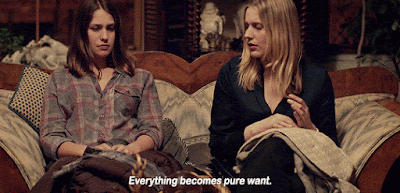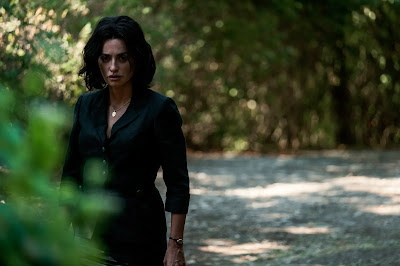The life of Enzo Ferrari spanned 90 years, rich enough to fill an almost 500-page book by Brock Yates. But in bringing “Enzo Ferrari: The Man, The Cars, The Races, The Machine” to the big screen, director Michael Mann, working from a long-gestating script by the late Troy Kennedy Martin, eschews an overarching account of Italy’s most famous racing and sports car entrepreneur with big slabs of critical Life Details to instead convey one year in Enzo’s life, 1957, full of personal and professional tribulation and culminating in a tragic Mille Miglia, the once-famed open-road motorsport endurance race. Mann has always favored exerting extreme pressure on his characters to see how they respond, and by narrowing his focus in “Ferrari,” his aim is not to summarize Enzo’s life but more specific, to get under the man’s hood, so to speak, and see what makes him tick.
“Ferrari” is not a heist movie but sort of opens in the vein of one with Enzo lighting out from the Modena countryside home he keeps with his mistress Lina (Shailene Woodley) by giving his car a running start, hopping behind the wheel, letting it coast along, and then, finally, starting the engine. He needs to make it back to Bologna in time to have morning coffee with his wife Laura (Penélope Cruz), who knows of Lina, and who demands this ritual to maintain appearances. Putting up such fronts is essentially the crux of “Ferrari’s” drama. Bologna reveres Enzo, which is demonstrated in an early scene at a barbershop where he entertains the regulars with comic witticisms while literally maintaining his appearance by getting a shave. Indeed, Driver
wears his suits,
wears his hair, and like in a brief scene of his character on the road in which rapid-fire cuts capture him coolly shifting gears, he exudes an air of control at all times, indifferent to the swirling chaos, unaware it’s threatening to consume him.
“Two objects,” Enzo explains at one point, “cannot occupy the same point in space at the same moment in time.” He’s referring to cars on a racetrack, but he may as well be highlighting the impossible dualities of his own life. Indeed, an early scene of Enzo attending Mass does not so much juxtapose the ovular communion wafers with the image of so many ovular stopwatches as Ferrari’s rival Maserati breaks a record on the track as link them together, racing inextricable from life itself. This idea is literalized in Enzo’s relationship with Laura given that she owns half his Ferrari business, and because the company is verging on bankruptcy, and Enzo is told he needs complete control for the necessary steps to keep it afloat, he must convince his relatively estranged wife to sign over her half to him, a volatile seesaw. In their frequent spats, and occasional eruptions of sex, they are at once made for each other and utterly incompatible, manifesting “a terrible joy and deadly passion.” That’s Enzo again, talking about his own life talking about racing.
Their scenes together are as ferocious as any on the track, and on full display in their introductory quarrel when Laura pulls a pistol, takes deliberately bad aim at her exasperating man, and shoots, leaving a hole in the wall not far from Enzo’s head. It’s Chekov’s Gun, in other words, but going off already, in a manner of speaking, which not only immediately establishes the combustible nature of their relationship, but how death permeates “Ferrari” from the figurative waving of the flag. Mother and father still grieve for their son Dino, having died only a year earlier from muscular dystrophy, making daily visits to his grave. Dino’s presences hovers over everything and is complicated by Enzo’s son Piero (Giuseppe Festinese) with Lina, of whose existence Laura is unaware, though comes to suspect, as if the 12-year-old’s illegitimacy is preventing cauterization of the gaping emotional wound.
The serene countryside scenes in Modena contrast against the more frenzied nature of Enzo’s life in Bologna, but too often, that’s all they are, symbols, not least because Woodley lacks the same pulse as Cruz. The latter seems to receive cues from the opera sequence midway through, virtually transmitting emotions directly to us as a soloist might with an aria. And though Lina is a calmer character, she is meant to instill a passion of her own, that she won’t just sit around in the shadows, and Woodley struggles to effuse the humanity and electricity of that struggle. I will not comment on the quality of the accent,
because that’s out of my jurisdiction, but I was also left wondering if Woodley was mistakenly charged by Mann with focusing so much on the accent, she forgot to give a performance.
Just as Enzo struggles to compartmentalize these separate lives, he struggles to compartmentalize the racetrack from his home life too. The opening images of a young Enzo in a race car inform the movie to come, one in which no longer fit to race, he is left to issue demands and instructions to his drivers, transforming them into avatars, an extension of his ego, and of his obsession. The racing scenes are themselves further extensions of that obsession. Thrilling isn’t the right word, they are more intense than that, no, more visceral, even elegiac, as conveyed in a sequence where Ferrari drivers compose letters to their loved ones before going off to the Mille Miglia. One of Enzo’s cars might win, but victory is compromised by death, a scene so unsentimentally gruesome as to take your breath away, a man at the wheel who is confident, and in control, until suddenly, he is not, wreckage strewn behind him.










































